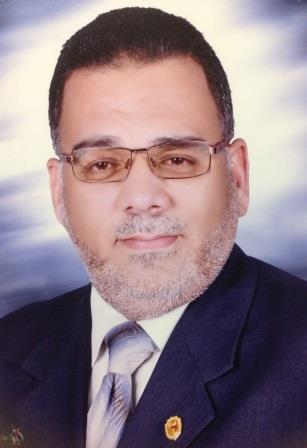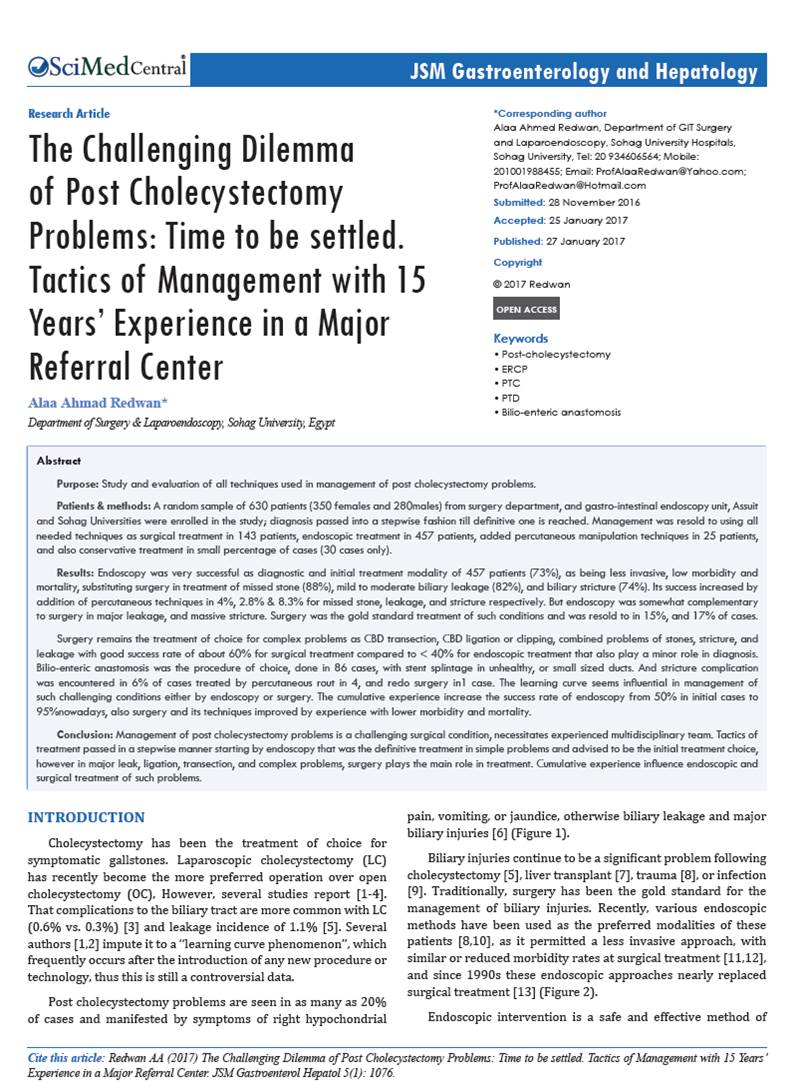Abstract
Purpose: Study and evaluation of all techniques used in management of post cholecystectomy problems.
Patients & methods: A random sample of 630 patients (350 females and 280males) from surgery department, and gastro-intestinal endoscopy unit, Assuit and Sohag Universities were enrolled in the study; diagnosis passed into a stepwise fashion till definitive one is reached. Management was resold to using all needed techniques as surgical treatment in 143 patients, endoscopic treatment in 457 patients, added percutaneous manipulation techniques in 25 patients, and also conservative treatment in small percentage of cases (30 cases only).
Results: Endoscopy was very successful as diagnostic and initial treatment modality of 457 patients (73%), as being less invasive, low morbidity and mortality, substituting surgery in treatment of missed stone (88%), mild to moderate biliary leakage (82%), and biliary stricture (74%). Its success increased by addition of percutaneous techniques in 4%, 2.8% & 8.3% for missed stone, leakage, and stricture respectively. But endoscopy was somewhat complementary to surgery in major leakage, and massive stricture. Surgery was the gold standard treatment of such conditions and was resold to in 15%, and 17% of cases. Surgery remains the treatment of choice for complex problems as CBD transection, CBD ligation or clipping, combined problems of stones, stricture, and leakage with good success rate of about 60% for surgical treatment compared to < 40% for endoscopic treatment that also play a minor role in diagnosis. Bilio-enteric anastomosis was the procedure of choice, done in 86 cases, with stent splintage in unhealthy, or small sized ducts. And stricture complication was encountered in 6% of cases treated by percutaneous rout in 4, and redo surgery in1 case. The learning curve seems influential in management of such challenging conditions either by endoscopy or surgery. The cumulative experience increase the success rate of endoscopy from 50% in initial cases to 95%nowadays, also surgery and its techniques improved by experience with lower morbidity and mortality.
Conclusion: Management of post cholecystectomy problems is a challenging surgical condition, necessitates experienced multidisciplinary team. Tactics of treatment passed in a stepwise manner starting by endoscopy that was the definitive treatment in simple problems and advised to be the initial treatment choice, however in major leak, ligation, transection, and complex problems, surgery plays the main role in treatment. Cumulative experience influence endoscopic and surgical treatment of such problems.


